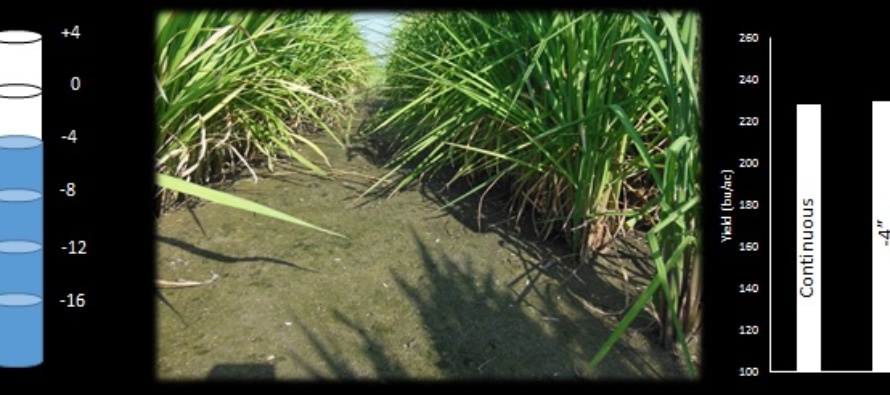MSU Researcher Utilizes Small Plots to Verify AWD

Related Articles
- 2010 Row Crop Short Course Video Links 0
- Calcium and Magnesium For Mississippi Crops 1
- March 11 Precision Agriculture Workshop 0
Latest Tweets
In addition to the large scale on farm rice studies, MSU research has utilized controlled small plot research to verify the use of AWD in rice. PhD. candidate Lee Atwill shares his AWD investigations.
Experiments were conducted at the Delta Research and Extension Center in Stoneville, MS during 2015 and 2016 to evaluate the yield and physiological response of rice to several alternate wetting and drying (AWD) irrigation treatments. Three rice cultivars, CL151, Rex, and XL745 (RiceTec) were evaluated in six different rice irrigation treatments. Irrigation treatments included: a continuous flood, allowing the flood to recede to the soil surface, 4” below the soil surface, 8” below the soil surface, 12” below the soil surface, and 16” below the soil surface. Water levels in each paddy were monitored utilizing a Pani pipe and irrigation events were triggered at each respective threshold. Rice grain yield was recorded at harvest. Data from this experiment in 2015 and 2016 suggest that allowing flood to subside to 4 inches below the soil surface does not result in yield loss compared to a continuous flooded system.
Included in these experiments were evaluations of the Clearfield and conventional weed control systems. Eight Clearfield and eight conventional weed control system were evaluated with each irrigation treatment. Barnyardgrass control was no different for rice grown under AWD irrigation than a continuous flood. Clearfield rice herbicide treatments provided 95% control of barnyardgrass, irregardless of irrigation treatment used. In the conventional herbicide treatments, barnyardgrass control for AWD was slightly better at 82%, as compared to the continuous flood treatments at 79% control. These results give us confidence that weed control in AWD irrigation can be maintained using current herbicide programs for conventional and Clearfield rice production systems. As in a continuously flooded rice system, management of weeds must be monitored and herbicide applications should be made in a timely manner.
Nitrogen management was also investigated using the different AWD irrigation treatments. The results suggest that when nitrogen is applied 100% preflood or 75% preflood followed by 25% at mid-season, there is no difference in yield compared to a continuously flooded treatments. We would emphasize that growers must maintain a flood for 21 days after preflood nitrogen is applied to allow for plant uptake before implementing AWD. Failure to maintain a 2-4” flood during after flooding can result in a loss of 30% of total N applied. Additionally, midseason N applications should be made into a flood, rather than on a moist soil surface to minimize N loss. These are critical considerations that will allow AWD irrigation to perform correctly.
Lee Atwill can be contacted at ratwill@drec.msstate.edu






Let me tell You a sad story ! There are no comments yet, but You can be first one to comment this article.
Write a comment